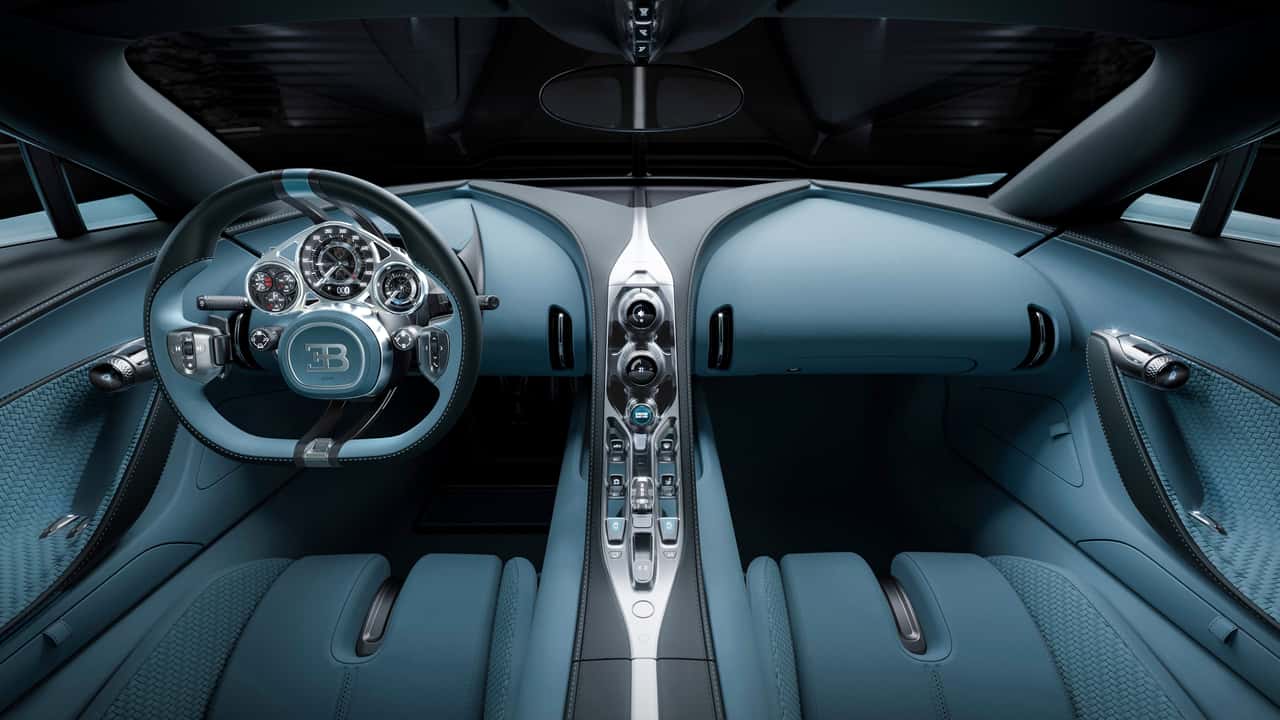
The Bugatti Tourbillon Doesn't Have Real Speakers. It Uses Something Much Cooler


The Bugatti Tourbillon is filled with all sorts of neat innovations. A steering wheel that rotates around a central hub, a titanium gauge cluster, 3D-printed suspension components, and a monster rear diffuser that doubles as a crash structure. Add to that a sound system that doesn’t use traditional speakers.
Top Gear magazine recently visited Rimac’s new Croatian headquarters, where Bugatti Rimac is developing the Tourbillon. CEO Mate Rimac delights in showing off all kinds of innovations on both this and the Rimac Nevera, and he’s particularly proud of the Tourbillon’s sound system. Rather than using traditional speakers, the Tourbillon uses piezoelectric elements that vibrate the car’s carbon-fiber tub. So effectively, the Tourbillon’s chassis is one big speaker.
This warrants further explanation. Traditional speakers use a magnet that receives an electrical signal, which in turn moves an electromagnetic voice coil back and forth. The voice coil is attached to some sort of diaphragm, typically a cone made from paper or metal, that vibrates, amplifying the sound. (Remember that sound is just air vibrating.) Obviously, this works incredibly well, but speaker magnets are quite heavy.
A piezoelectric speaker uses a small crystal like quartz to do much the same thing. An electrical signal sent to the crystal vibrates some sort of diaphragm, usually a small piece of flat metal. Some hi-fi speakers use this technology, but more often, a piezoelectric speaker is just a small buzzer, like an alarm in an old quartz wristwatch.
In the Tourbillon, the actual carbon-fiber chassis is the diaphragm—those piezo transducers are designed to transmit vibrations directly into the tub. Rimac shows Top Gear the Tourbillon’s effective subwoofer, a piezo element attached to the roof of the car. It’s a tiny metal piece, far smaller and lighter than a traditional speaker.

The interior of the Tourbillon. No traditional speakers here.
Photo by: Bugatti
“Believe me, the sound quality of that car is in a different universe compared to a Chiron,” Rimac says. “So we saved weight, space, and improved the sound quality.”
While this seems to be the first example of an automaker using piezoelectric transducers to turn a carbon-fiber tub into a speaker, the Tourbillon is not the first car to use part of its body structure for audio reproduction. Mercedes-Benz introduced a system called Front Bass that turned the front firewall of the 2013 SL into, effectively, a large speaker box. Though, this system did use traditional electromagnetic speakers. The car’s structure was just used to enhance the sound from the speakers.
Neat stuff, though with a naturally aspirated V-16 engine just behind the rear bulkhead, we wonder if anyone really needs a high-end audio system.
Bugatti Boss on Turbocharged Hybrid Supercars: ‘I Don’t Get It’
Bugatti’s New V-16 Has a Bizarre Timing System